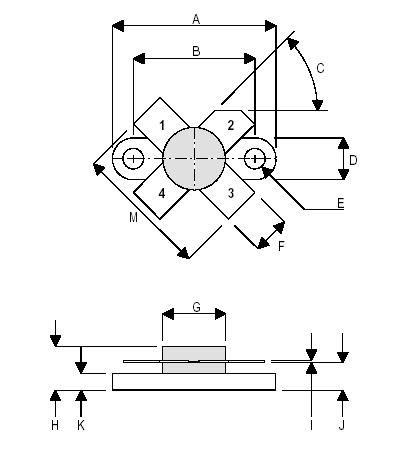D1001, D1001UK, D1002 Selling Leads, Datasheet
MFG:NO Package Cooled:-8 D/C:NO



MFG:NO Package Cooled:-8 D/C:NO

Want to post a buying lead? If you are not a member yet, please select the specific/related part number first and then fill the quantity and your contact details in the "Request for Quotation Form" on the left, and then click "Send RFQ".Your buying lead can then be posted, and the reliable suppliers will quote via our online message system or other channels soon.
TOP
PDF/DataSheet Download
Datasheet: D1001UK
File Size: 44460 KB
Manufacturer: SEME-LAB [Seme LAB]
Download : Click here to Download
PDF/DataSheet Download
Datasheet: D1001UK
File Size: 44460 KB
Manufacturer: SEME-LAB [Seme LAB]
Download : Click here to Download
PDF/DataSheet Download
Datasheet: D1002UK
File Size: 42094 KB
Manufacturer: SEME-LAB [Seme LAB]
Download : Click here to Download
| PD | Power Dissipation | 50W |
| BVDSS | Drain-source breakdown voltage | 70V |
| VGSS | Gate-source breakdown voltage | ±20V |
| ID(sat) | Drain Current | 5A |
| Tstg | Storage temperature | -65 to 150°C |
| Tj | Maximum operating junction temperature | 200°C |

Mimix Broadband's 0.05-50.0 GHz GaAs MMIC distributed amplifier has a small signal gain of 9.0 dB with a noise figure of 5.0 dB across the band. The device also includes 15.0 dB gain control and a +9.0 dBm P1dB compression point. This MMIC uses Mimix Broadband's 0.15 m GaAs PHEMT device model technology, and is based upon electron beam lithography to ensure high repeatability and uniformity. The chip has surface passivation to protect and provide a rugged part with backside via holes and gold metallization to allow either a conductive epoxy or eutectic solder die attach process. This device is well suited for microwave, millimeter-wave, wideband military, and fiber optic applications.
Supply Voltage (Vd) +10.0 VDC
Supply Current (Id) 150 mA
Gate Bias Voltage (Vg) +0.3 VDC
Input Power (Pin) +18 dBm
Storage Temperature (Tstg) -65 to +165
Operating Temperature (Ta) -55 to MTTF Table2
Channel Temperature (Tch) MTTF Table2
(2) Channel temperature affects a device's MTTF. It is recommended to keep channel temperature as low as possible for maximum life.
